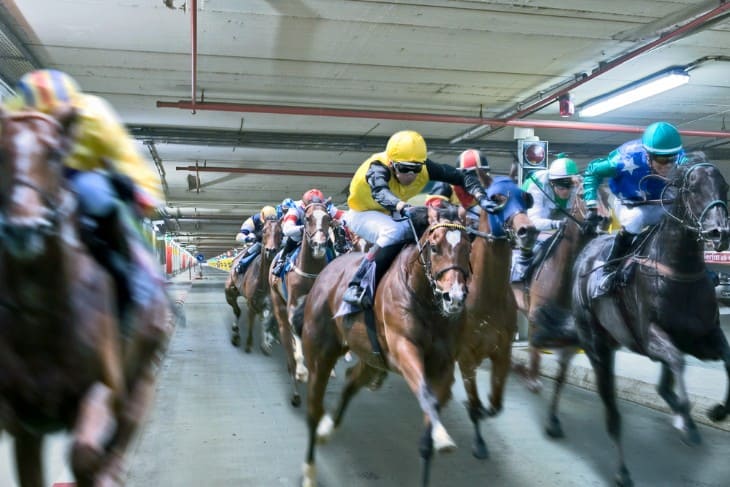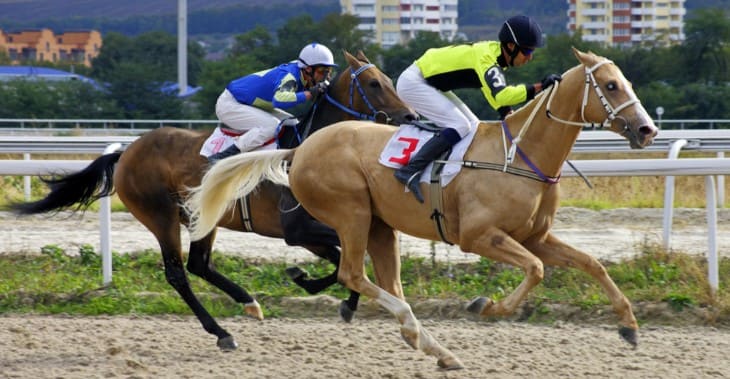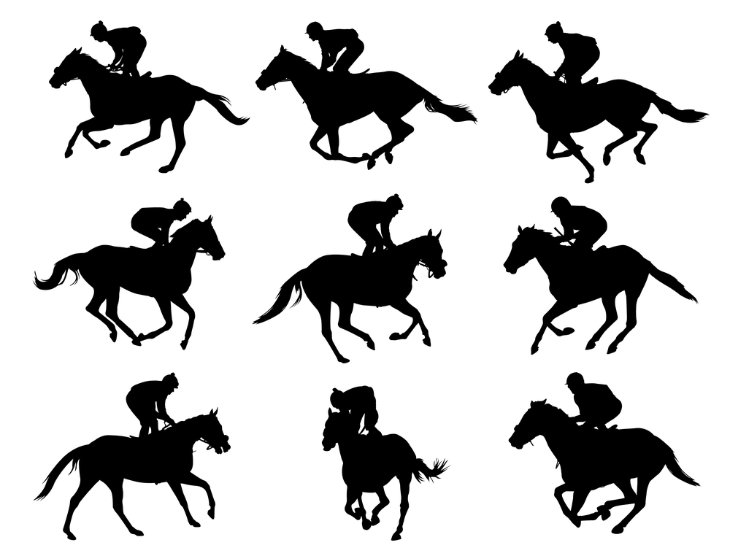Horse racing, a historic sport filled with tradition and thrill, has engaged fans for ages. It combines the grace of horses, the expertise of jockeys and drivers, and the exhilaration of betting. This article will explore the different facets of horse racing, distinguishing between the various types of races.
The Rich History of Horse Racing
Horse racing's origins trace back to ancient times, with records of its existence dating back to the chariot races of ancient Greece and Rome. However, it was the British who formalised the sport into what we recognise today. In the early 12th century, knights returning from the Crusades brought with them swift Arabian horses, which were crossed with the native English stock, producing the foundation of the modern thoroughbred.
Throughout the centuries, horse racing evolved from a pastime for the elite to a widespread spectator sport, with racing festivals attracting people from all walks of life. The establishment of the Jockey Club in the 18th century further enhanced the organisation and regulation of the sport, ensuring fairness and integrity in racing.
Over the years, various types of horse races emerged, each with its unique characteristics and charm. The three primary categories that have endured are flat racing, jump racing (also known as National Hunt racing), and harness racing.
Understanding the Thrill of Flat Racing
Flat racing stands as the most common and oldest form of horse racing. As its name suggests, the races are conducted on level tracks without any obstacles. Horses compete in this format to demonstrate their speed, agility, and endurance, without having to navigate hurdles or jumps.
The distance of flat races can vary greatly, ranging from short sprints of five furlongs (approximately 1,000 meters) to stamina-testing long-distance events like the prestigious Epsom Derby and the St. Leger Stakes. These races are often referred to as "Classics" and hold significant importance in the racing calendar.
Flat racing takes place on turf or all-weather surfaces, each offering distinct advantages and challenges to the runners. Turf tracks provide natural footing, subject to weather conditions, whereas all-weather tracks allow for consistent racing regardless of weather changes. The choice of surface can influence a horse's performance, making trainers and jockeys consider the track conditions carefully.
In this fast-paced discipline, it's the jockey's ability to position the horse strategically and time the final sprint to perfection that can be the difference between victory and defeat. The sight of sleek thoroughbreds thundering down the straight, cheered on by roaring crowds, evokes a thrilling atmosphere that is unparalleled in the world of sports.
[promotion:240]
Grasping the Essence of Jump Racing (National Hunt Racing)
If flat racing represents the elegance and speed of thoroughbreds on level ground, then jump racing, also known as National Hunt racing, embodies the daring spirit of both horse and rider as they conquer obstacles with skill and bravery.
National Hunt racing is a true test of stamina and jumping ability. Horses in these races face a series of hurdles and fences, each designed to challenge their agility and bravery. The discipline demands a different set of skills from the jockeys, who must navigate the obstacles and make split-second decisions to maintain their position and momentum.
One of the most prestigious events in National Hunt racing is the Grand National, held annually at Aintree Racecourse in Liverpool. This grueling steeplechase covers a distance of about four and a half miles and features 30 formidable fences that demand impeccable timing and courage from both horse and rider. The Grand National is renowned for its unpredictability, with each jump presenting the potential for drama and spectacle.
National Hunt racing is often associated with the winter months, adding an additional layer of challenge. The weather conditions can make the tracks soft and testing, and the races become as much about endurance as they are about speed.
The affinity of fans for jump racing is undeniable, as they marvel at the bravery of horses clearing obstacles with ease and cheer on their favorites as they battle for supremacy in this thrilling and high-octane form of racing.

Harness Racing: A Unique Equestrian Experience
Harness racing, though less well-known than flat and jump racing, has a distinctive charm of its own. Unlike the other two disciplines, where jockeys ride atop the horses, harness racing involves horses pulling lightweight two-wheeled carts called sulkies, with drivers controlling the reins from behind.
This type of racing is commonly associated with Standardbred horses, a breed known for its versatility and speed. The sport originated in America during the 18th century and quickly gained popularity in other parts of the world, including the UK.
Harness racing typically takes place on oval tracks, and the horses compete in a diagonal gait known as "trotting" or a lateral gait known as "pacing." The events are often divided into two categories: trotting races and pacing races. In trotting races, the horses move their legs in diagonal pairs, while in pacing races, the horses move their legs laterally on the same side of their body.
One of the major attractions of harness racing is the excitement of watching horses and drivers work in unison. The drivers' skills play a vital role, as they must balance their control over the horse's speed and tactics while ensuring their cart maintains a straight and steady course.
Although not as glamorous as flat racing or as daring as jump racing, harness racing has its own dedicated following. The sport's emphasis on strategy, endurance, and precision driving creates a unique and exhilarating equestrian experience that draws fans to harness racing tracks across the UK and beyond.
Track Conditions and Their Impact on Racing Types
In the world of horse racing, the track conditions play a pivotal role in determining the outcome of races. Different types of races are affected in unique ways by the condition of the racing surface, be it turf, all-weather, or dirt.
In flat racing, the track condition is a major consideration for trainers and jockeys when deciding which races to enter their horses. Turf tracks can range from firm to soft, depending on the weather and maintenance. A firm turf is ideal for horses with speed and good acceleration, as it provides a solid surface for quick strides. On the other hand, soft turf requires more stamina, making it suitable for horses with staying power.
All-weather tracks, typically made of synthetic materials, offer more consistent conditions, regardless of weather changes. These tracks tend to be more forgiving than turf, making them preferable for horses with minor injuries or those less experienced on turf.
Jump racing, especially National Hunt racing, is often associated with rain and muddy tracks, particularly during the winter months. These conditions test the horse's jumping ability even further, as they need to maintain their balance and power through the obstacles despite the slippery terrain. Jockeys must exhibit exceptional skill in handling their mounts on such treacherous surfaces, ensuring they can tackle each fence or hurdle safely.
Harness racing, being less dependent on surface conditions than the other types, can be conducted on various track types, including turf, all-weather, and even dirt tracks. Nevertheless, the quality and consistency of the track can still influence the performance of Standardbred horses and the strategies employed by their drivers.
The adaptability of horses and the tactics of jockeys and drivers in response to varying track conditions create an ever-changing dynamic in the world of horse racing, making it a sport that is both challenging and captivating.
Equine Athletes: Breeds Best Suited for Each Racing Style
Horse racing would not be the thrilling spectacle it is without the exceptional athletes that compete - the horses. Different breeds have been selectively bred over generations to excel in specific racing styles.
In flat racing, the Thoroughbred reigns supreme. Known for their speed, agility, and competitive spirit, Thoroughbreds dominate the tracks around the world. These magnificent animals boast a lean and athletic build, ideal for swift sprints or enduring long-distance races.
Jump racing, on the other hand, often sees a mix of Thoroughbreds and other breeds, such as Irish Sport Horses and French Trotters. Irish Sport Horses are admired for their versatility, making them excellent choices for the varied demands of National Hunt racing. French Trotters, as their name suggests, excel in trotting races, and their endurance and stamina make them valuable contenders in harness racing as well.
Harness racing primarily features Standardbred horses. Bred for their ability to trot or pace at a specific gait, Standardbreds demonstrate remarkable consistency and efficiency in their movements. These horses possess a calm temperament, which is crucial when competing at high speeds while pulling a sulky.

Jockeys and Drivers: The Skilled Handlers of Racehorses
In the thrilling world of horse racing, jockeys and drivers are the unsung heroes who hold the reins to victory. These skilled handlers possess a unique combination of athleticism, strategy, and rapport with their equine partners, making them vital components of the racing spectacle.
In flat racing, jockeys must be masters of balance and finesse. They ride atop their powerful Thoroughbred mounts, guiding them through the ebb and flow of the race. Weight is a crucial factor, and jockeys must maintain a strict diet and exercise regimen to keep their bodies lean and agile. The bond between jockey and horse is built through hours of training and racing together, developing an understanding and communication that is almost telepathic.
Jump racing demands a different set of skills from jockeys, as they must navigate their horses through obstacles with precision and courage. Timing is paramount - knowing exactly when to ask the horse to jump can be the difference between clearing the fence with ease and taking a costly fall. Jump jockeys are often known for their bravery, for they put themselves at risk alongside their equine companions, demonstrating the true meaning of teamwork.
In harness racing, drivers take the reins, literally. Their expertise lies in maintaining control of their Standardbred horses while urging them to reach their maximum potential. Drivers need a keen understanding of race strategy, knowing when to push their horses for an advantage and when to conserve energy for a powerful finish. Clear communication between driver and horse is essential, achieved through a combination of gentle cues and firm commands.
Both jockeys and drivers must be adaptable, able to assess and adjust to changing track conditions and their competitors' tactics. They are often the unsung stars of the sport, toiling behind the scenes, but their skill and dedication are the driving force behind the extraordinary performances witnessed on race days.
Betting and Wagering in Different Types of Horse Races
As long as there have been horse races, there have been wagers placed on the outcomes. Betting adds an extra layer of excitement for spectators, and it has become an integral part of horse racing culture.
In flat racing, betting options are diverse and plentiful. Punters can place bets on the winner, the horse to finish in the top three (each-way), or even predict the order of the top two finishers (forecast) or the top three finishers (tricast). The odds are constantly changing based on the horses' form, the jockeys riding them, and the prevailing track conditions. Some of the most prestigious flat races attract a massive betting turnover, such as the Cheltenham Gold Cup and the Epsom Derby.
Jump racing also offers various betting opportunities. Punters can wager on the horse they believe will win, place (finish in the top two or three), or show (finish in the top three or four). For the seasoned bettors, there are more complex bets like exactas, quinellas, and trifectas, where they predict the exact order of the top two or three finishers, respectively. The unpredictable nature of jump racing can lead to big paydays for those who accurately predict the outcomes.
Harness racing betting tends to be more straightforward, with punters primarily focusing on win, place, and show bets. Some tracks offer Pick 4, Pick 6, and other exotic bets similar to those in other racing types, adding an extra layer of challenge and excitement for bettors.







